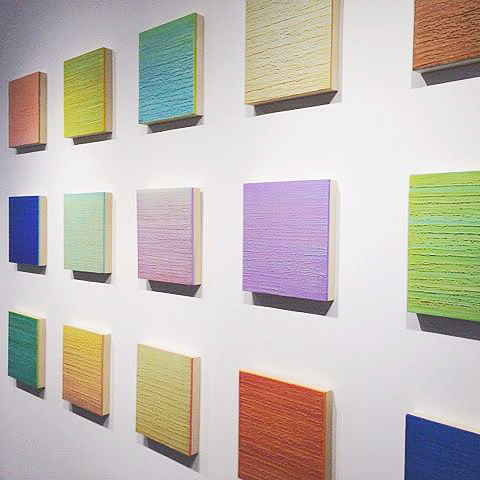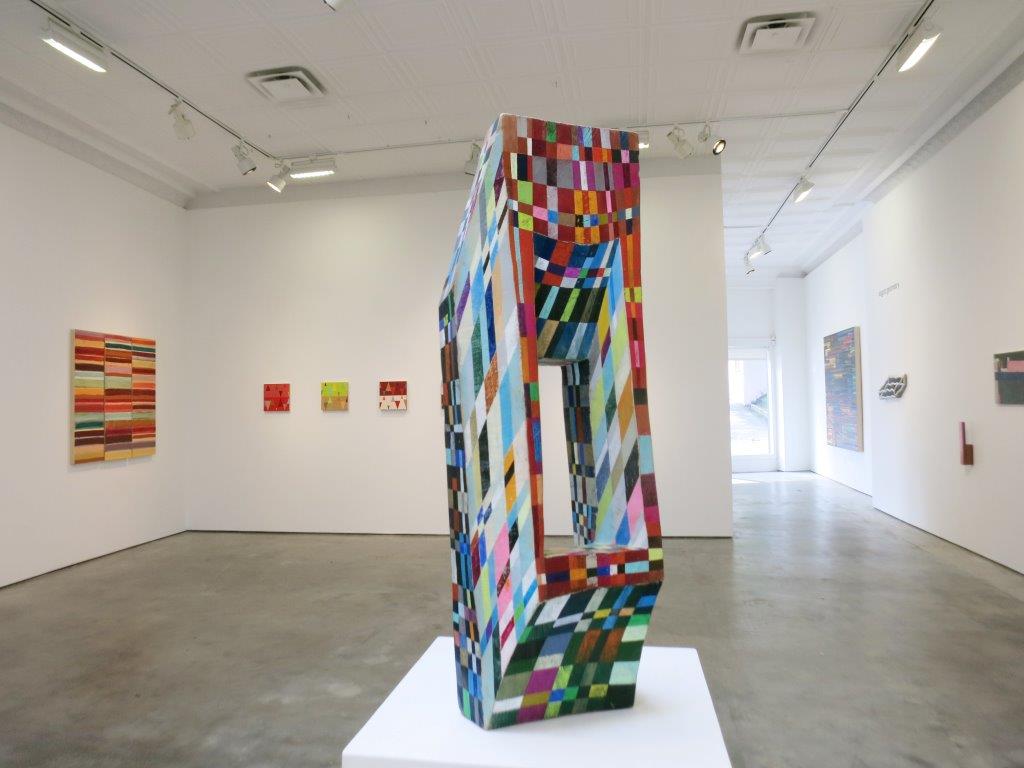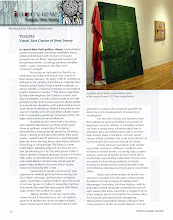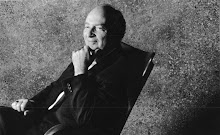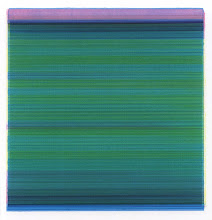.
Installation view into the large main gallery, with Brooklyn, Wol, Oh April and Big Blue
.
Joan Snyder has been busy. Her show,
A Year in the Painting Life, at Betty Cuningham in Chelsea, offers a look at what she worked on during the past 365 days. The number of paintings is impressive, both in number (15) and in size (the cenerpiece of the show,
Oh April, is 54 by 210 inches, almost 18 feet wide).
Brooklyn, 2010; acrylic, pastel, burlap, fabric, herbs and rosebuds on linen, 54 x 72 inches
If I had to describe Joan Snyder’s painting to someone who had never seen it before, I would call it "Woodstock abstract expressionism"—fields of rosebuds, petals, seeds, herbs, straw and mud in concert with muscular brushwork, lovely colors and raggy burlap. (Maybe it's no coincidence that she lives part time in Woodstock?) Her paintings almost always feel like springtime—or more precisely, like the point in a cycle that has just ended with or is just about to begin with, spring. I don’t love every painting, but I respect Snyder’s unique vision and means of expression, which has been consistent for over 40 years. And you can get lost up close in her surfaces.
.
This wall is at your shoulders when you walk into the main gallery
At right: The Fall with Other Things in Mind, 2009; oil, acrylic, papier mache, cloth, seeds, dried flowers and herbs on linen; 54 x 72 inches ..
Information unavailable on website for painting in foreground. The gallery website shows a different painting in its place. I love the palette of this one
View between front gallery and main gallery
Left: Summer Fugue, 2010; oil, acrylic, papier mache, cord, wooden frame, burlap, silk on linen and wood panels
Right: Are Mine, 2010; oil, glitter, rosebuds and burlap on panel, 30 x 30 inches.
Detail of Are Mine below:
A Year in the Painting Life is up through October 30. Installation shots on the
gallery website are plentiful. Navigating it is tortuous; there's a small window that requires you to scroll up and down as well as back and forth. But stick with it. Snyder's work is worth the inconvenience of the site.



























